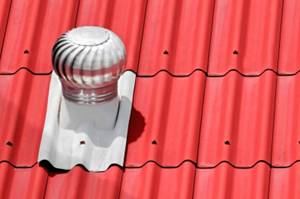Pitched Roof Ventilation.
A pitched / sloped roof is made up of several different components: the structure, the insulation elements , the ventilation, the roof covering, the roof drainage and apertures.

Why ventilate the roof slope?
The attic is very important because it:
- can allow maintenance of the roof elements (beams, insulation, roof screen, covering)
- avoids water condensation in the roof
- can aid in drying elements of the roof after the rain
- keeps heat outside during the summer
Installation of ventilation in the roof slope
It is important to have good ventilation so as to draw out hot air which becomes trapped in the attic during summer time and also to avoid the build-up of moisture during winter months.
To ventilate the space under a sloping roof, there are several options. Create air inlets and outlets to allow air flow:
- creating air inlets at the bottom of the roof (the groove)
- create air outlets on top of the roof (closers), where the panels meet (the ridge)
- inputs and outputs are placed in staggered rows
- the size of the air inlet should be at least equal to that of the output.
- install a wind driven ventilator / roof exhaust vent
- Some roofing tiles have a rounded shape, and are self-ventilated. It is not necessary to provide another ventilation system.
Roofing
Pitched Roof
Flat Roof
Costs and Estimates
